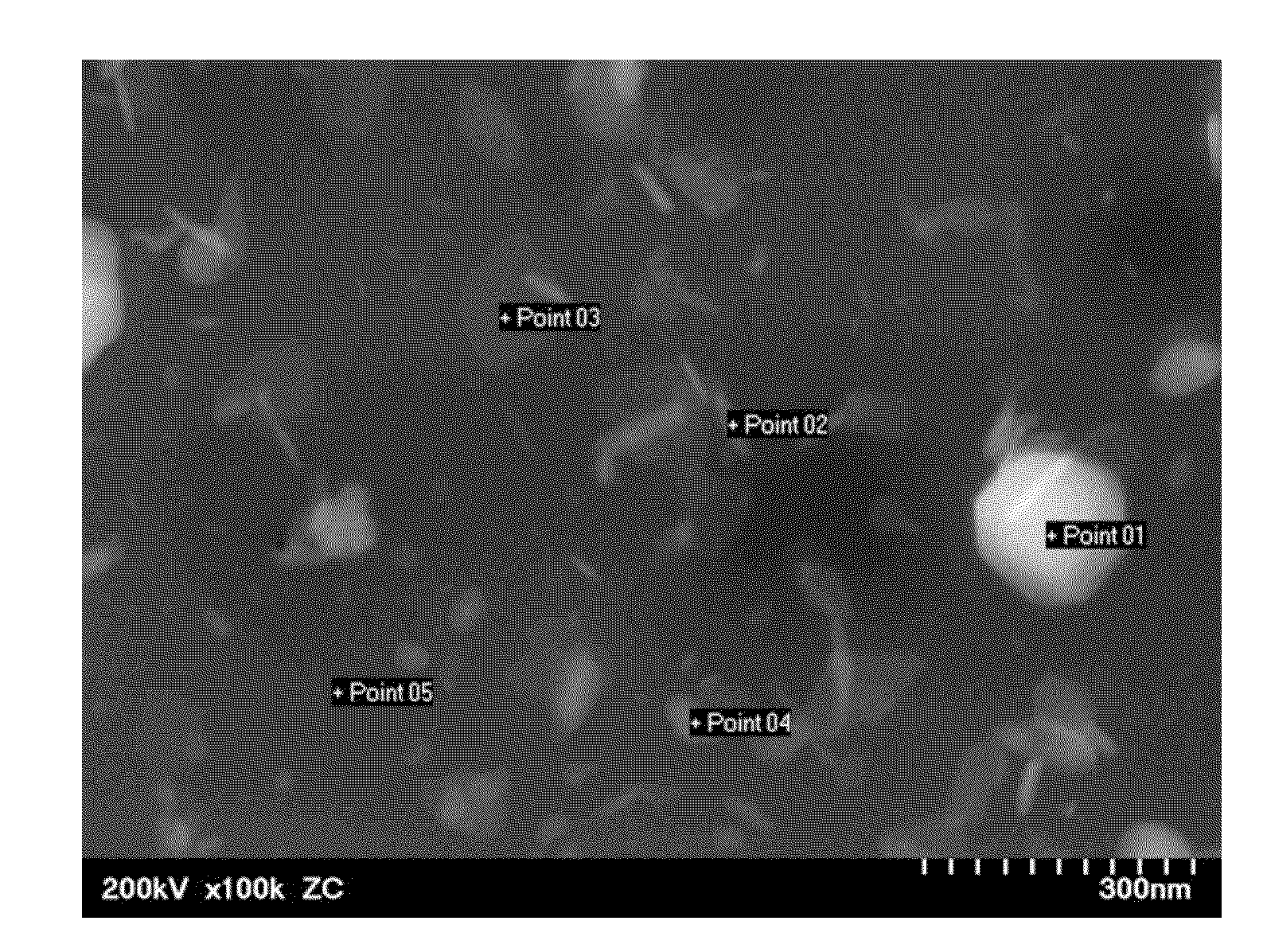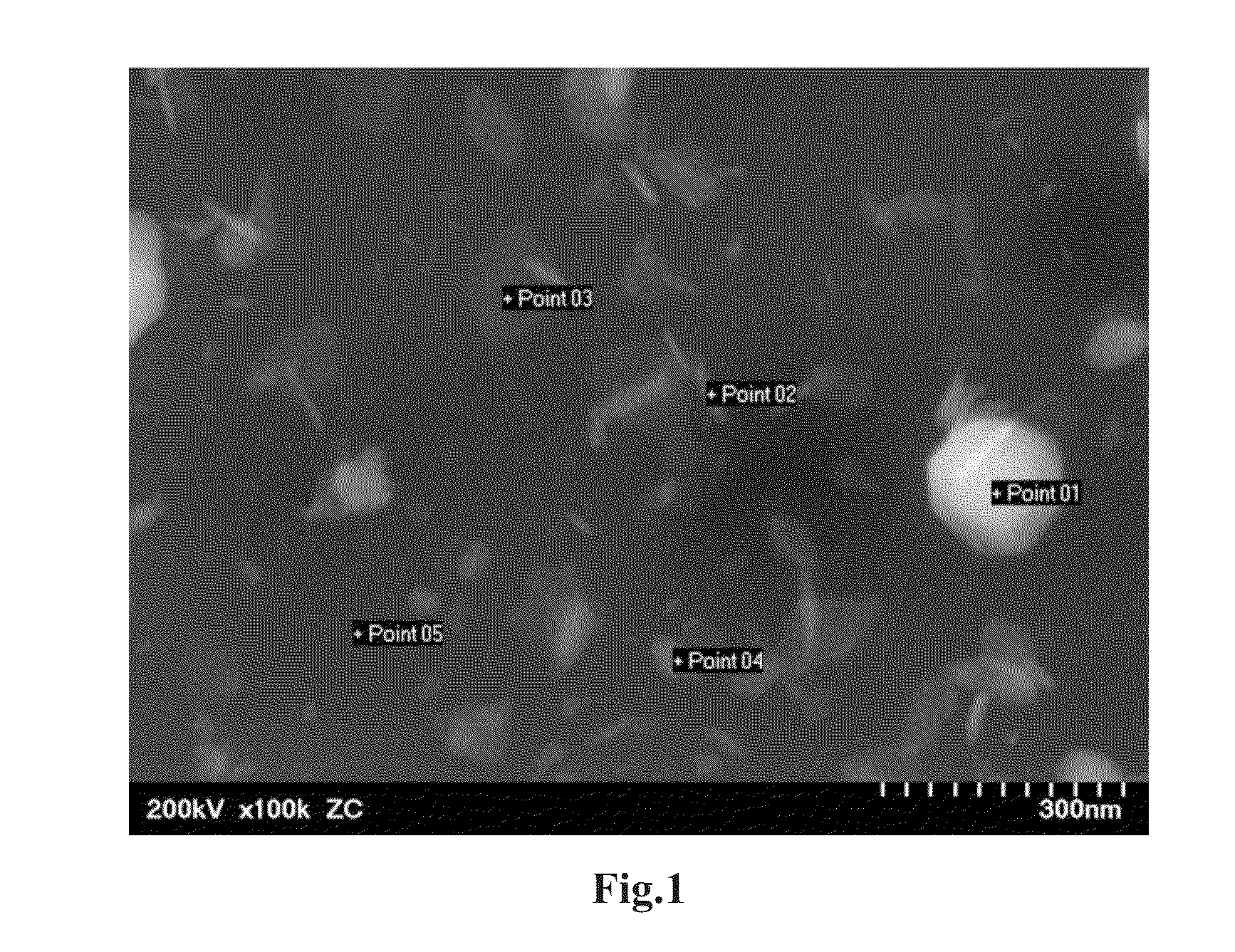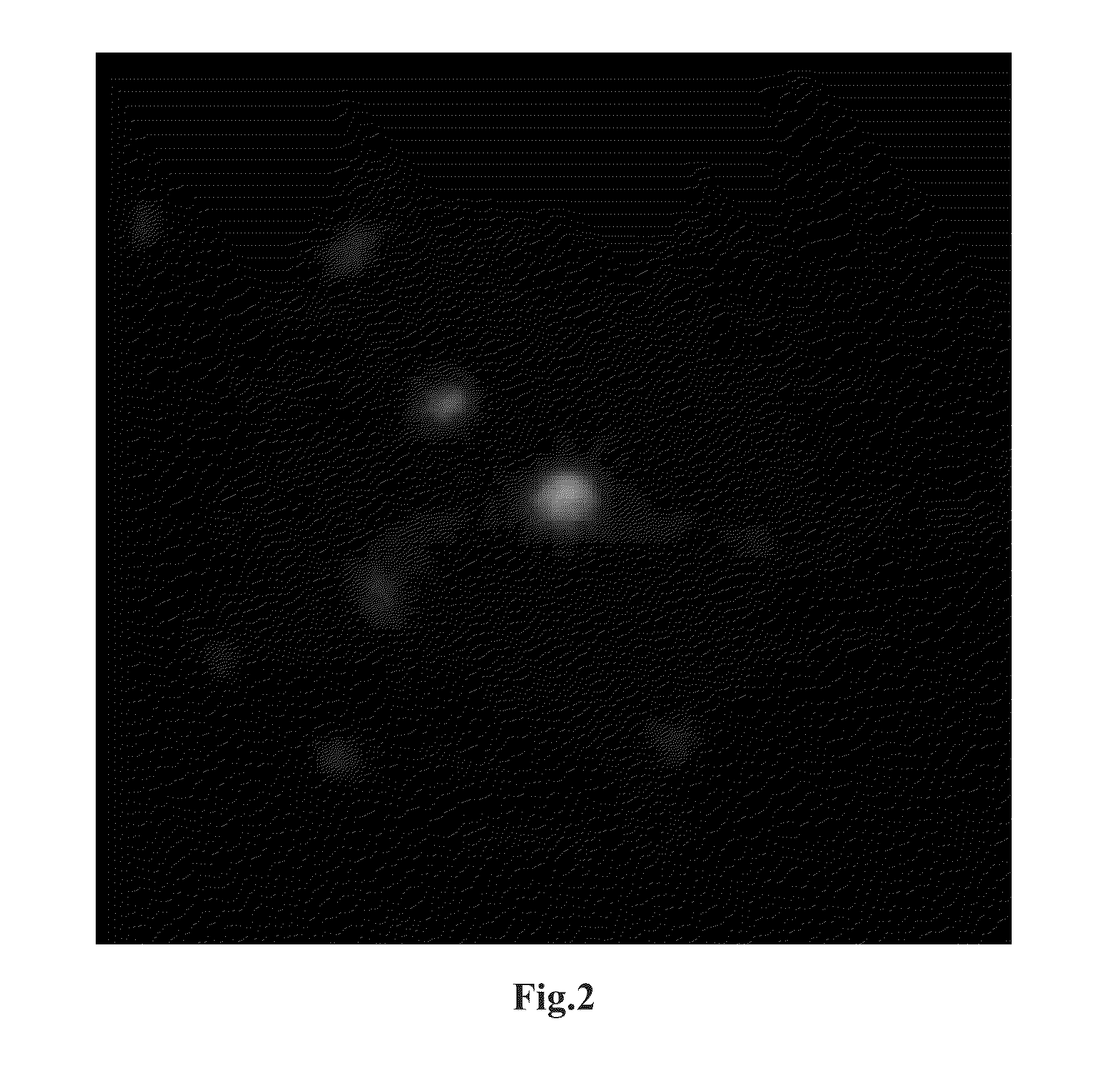Solid-state lithium ion conductor and electrochemical device
a lithium ion conductor and lithium ion technology, applied in the direction of electrochemical generators, non-aqueous electrolyte cells, transportation and packaging, etc., can solve the problems of not substantially describing any excellent solid-state, patent documents that do not substantially describe any excellent solid-state, and not substantially describing any improved ion conductivity
- Summary
- Abstract
- Description
- Claims
- Application Information
AI Technical Summary
Benefits of technology
Problems solved by technology
Method used
Image
Examples
example 1
Preparation of Sample
[0052]Li2S (Kojundo Chemical Laboratory, product No. LII06PB) and P2S5 (Aldrich, product No. 232106) were respectively weighed so that the molar ratio thereof becomes 85:15, and mixed, thereby providing a mixture. Then, 1 mole of ZnS (Kojundo Chemical Laboratory, product No. ZNI10PB) was weighed relative to 99 moles of this mixture. Zn is divalent. The weighed material contains 0.28 mol % of Zn relative to the entire material. The molar ratio of Li to P is 5.7. The weighed material was entirely placed in a planetary ball mill (Fritsch). The material was pulverized and mixed for 6 hours at 350 rpm, thereby providing powder mixture. This powder mixture, the solid-state lithium ion conductor particles, was subjected to XRD measurement. As a result, a clear diffraction peak was not observed. Thus, it was confirmed that there is no crystalline phase in the solid-state lithium ion conductor particles. In other words, the solid-state lithium ion conductor particles wer...
example 2
[0054]In a manner similar to Example 1, Li2S and P2S5 were pulverized and mixed, thereby providing powder mixture. This powder mixture was subjected to heat treatment for 2 hours at 240° C. The powder mixture after this heat treatment was subjected to XRD measurement. As a result, a plurality of clear diffraction peaks was observed. Thus, the generation of a crystalline phase was confirmed. The ion conductivity was determined in a manner similar to Example 1. As a result, the ion conductivity was 4.8×10−4 S / cm. Moreover, the electron conductivity of the evaluation sample was determined by a DC method. As a result, the electron conductivity was 3.4×10−8 S / cm. Thus, the electron conductivity was negligibly low.
example 3
[0055]Li2S and P2S5 were respectively weighed so that the molar ratio thereof becomes 85:15, and mixed, thereby providing a mixture. Relative to 99.5 moles of this mixture, 0.5 moles of La2S3 (Kojundo Chemical Laboratory, product No. LAI07PB) were weighed. La is trivalent. The weighed material contains 0.28 mol % of La relative to the entire material. The molar ratio of Li to P is 5.7. The weighed material was pulverized and mixed in a manner similar to Example 1, thereby providing the powder mixture. This powder mixture, i.e., solid-state lithium ion conductor particles were subjected to XRD measurement. As a result, a clear diffraction peak was not observed. It was confirmed that there is no crystalline phase in the solid-state lithium ion conductor particles. In other words, the solid-state lithium ion conductor particles are in the amorphous state. The ion conductivity was determined in a manner similar to Example 1. As a result, the ion conductivity was 3.5×10−4 S / cm. Moreover,...
PUM
| Property | Measurement | Unit |
|---|---|---|
| molar ratio | aaaaa | aaaaa |
| melting temperature | aaaaa | aaaaa |
| temperature | aaaaa | aaaaa |
Abstract
Description
Claims
Application Information
 Login to View More
Login to View More - R&D
- Intellectual Property
- Life Sciences
- Materials
- Tech Scout
- Unparalleled Data Quality
- Higher Quality Content
- 60% Fewer Hallucinations
Browse by: Latest US Patents, China's latest patents, Technical Efficacy Thesaurus, Application Domain, Technology Topic, Popular Technical Reports.
© 2025 PatSnap. All rights reserved.Legal|Privacy policy|Modern Slavery Act Transparency Statement|Sitemap|About US| Contact US: help@patsnap.com



